Electro engineering, actually, emeritus nowadaysHe claims to be an engineer (of what?) so that should be straight-forward for him to do, not that I think he'll do that anytime soon.
-
WANTED: Happy members who like to discuss audio and other topics related to our interest. Desire to learn and share knowledge of science required. There are many reviews of audio hardware and expert members to help answer your questions. Click here to have your audio equipment measured for free!
- Forums
- Audio, Audio, Audio!
- DACs, Streamers, Servers, Players, Audio Interface
- Combination Audio DAC and Headphone Amplifiers
You are using an out of date browser. It may not display this or other websites correctly.
You should upgrade or use an alternative browser.
You should upgrade or use an alternative browser.
RME ADI-2 FS Version 2 DAC and Headphone Amp Review
- Thread starter amirm
- Start date
Electro engineering, actually, emeritus nowadays
Perhaps you should read more about proper audibility testing here, on ASR, as that's not a subject covered by any EE program. Differences that you are describing as "not subtle" are impossible with the differences between HQP and RME built-in filters. Like sibilance, for example.
Of the recent posts here I am most interested in the control software. I have created the first MSO filters for my subwoofers using a miniDSP 2x4 HD and once I have finished the final tinkering with those subwoofer filters the next step should be to equalize the main speakers in the 80-200 Hz range, measuring with REW and then applying filters into the ADI-2. Simplifying that will make me very happy. In fact, what I am really hoping for is a facility to download REW filters directly.
Veri
Master Contributor
- Joined
- Feb 6, 2018
- Messages
- 9,600
- Likes
- 12,042
Maybe it's pseudo sibilance.. as in pseudo science.Perhaps you should read more about proper audibility testing here, on ASR, as that's not a subject covered by any EE program. Differences that you are describing as "not subtle" are impossible with the differences between HQP and RME built-in filters. Like sibilance, for example.
Or maybe it Maybelline.
Wonder, is there any tests performed here using HQPlayer software re-sampling and filtering? As the RME provides in my ears the superior setting Direct DSD, hence bypassing internal DSP, it allows for expernal dsp and HQP is changing this DAC from being an OK DAC to an awesome one.
.
Try playing music using RME's Direct DSD, HQPlayer setting ADSM7ECv2, poly-sinc-xla, DSD256 over PCM, (etc). Is is mind-blowing and highly addictive.
But only the AKM version lets you bypass the modulators. The ESS version won't let U do that.
But I agree. HQPlayer allows for some nice improvements.
I know, it took a while until finding a AKM4493 v2. I had the v1 first, but when finding the v2, I sold it back to my brother who was *drums* blown away when he heard the HQP stream with bypass on v1 at my home, compared to when he first owned it. He is likely as stupid as me, as it seems ...But only the AKM version lets you bypass the modulators. The ESS version won't let U do that.
But I agree. HQPlayer allows for some nice improvements.
V3 is not an option, but always scouting for a higher-end DAC with complete DSP bypass....
A FFT Spectrum of stacked white noise of ADI-2 DAC FS ver.B (AK4493) and a FFT Spectrum of each DA filter of 19.1kHz + white noise.
I referred to KSTR, MC_RME and John Atkinson. thank you.

I referred to KSTR, MC_RME and John Atkinson. thank you.
Attachments
-
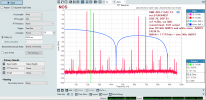 rme_adi2dac_4493_08_nos.png105.7 KB · Views: 78
rme_adi2dac_4493_08_nos.png105.7 KB · Views: 78 -
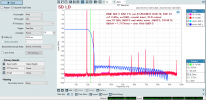 rme_adi2dac_4493_07_sdld.png116.3 KB · Views: 74
rme_adi2dac_4493_07_sdld.png116.3 KB · Views: 74 -
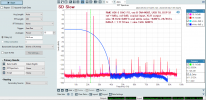 rme_adi2dac_4493_06_sdslow.png109.3 KB · Views: 65
rme_adi2dac_4493_06_sdslow.png109.3 KB · Views: 65 -
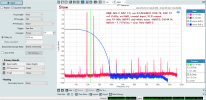 rme_adi2dac_4493_05_slow.png109.8 KB · Views: 64
rme_adi2dac_4493_05_slow.png109.8 KB · Views: 64 -
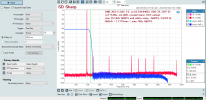 rme_adi2dac_4493_04_sdsharp.png111.7 KB · Views: 73
rme_adi2dac_4493_04_sdsharp.png111.7 KB · Views: 73 -
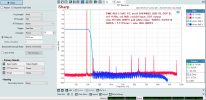 rme_adi2dac_4493_03_sharp.png111.4 KB · Views: 80
rme_adi2dac_4493_03_sharp.png111.4 KB · Views: 80 -
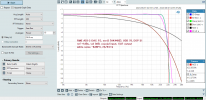 rme_adi2dac_4493_02_white_02.png90.4 KB · Views: 71
rme_adi2dac_4493_02_white_02.png90.4 KB · Views: 71
Thanks for the measurements @nagster.
With the Slow filters, it looks like the spurious tones generated in human hearing band, are the result of IMD?
Thankfully, at full scale they are in inaudible territory.
If this is IMD, then the manual, which I’m re-quoting here, appears to not be accurate:
With the Slow filters, it looks like the spurious tones generated in human hearing band, are the result of IMD?
Thankfully, at full scale they are in inaudible territory.
If this is IMD, then the manual, which I’m re-quoting here, appears to not be accurate:
@MC_RME?Please also note that Slow and NOS filters cause much more aliasing into the audio band and out-of-band noise than Sharp filters.
You're describing a phenomenon that should be absolutely and undoubtedly measurable.The difference is not subtle at all, there is in some cases a massive impact. I have had the pleasure of meeting some of the persons with whom I'd disussed this topic with and listened to their hifi rigs, and the common denominator has been lack of silence. The total level of noise produced in those rigs, for various reasons has been clearly audible
Please don't go that road.This is the danger with an all tech approach, the trust in measurements as the only way to tell the truth?
Again, you described clearly identified and audible things:
There's absolutely no way that this wouldn't be measurable. Noise (like with silence dithered test file) is extremely easy to measure. Just like this:lack of silence. The total level of noise produced in those rigs, for various reasons has been clearly audible
Then, instead of annecdotes, please bring actual proofs (controlled listening). There's none out there, showing that two DACs measuring well below threshold of hearing, would not sound the same. Just none.Well they don't and I bet you also recognize a difference, even though the measurements look almost exactly the same.
Last edited:
I assume the tests here are done in a perfectly controlled invironment, I would guess a sealed/shielded laboratory room, where any interference, wired or airborne is null, mains irregularities is filtered out, to exclude all this from the equation?
No need, pretty much any competent DAC already does this, extremely well.
Also just to address the first paragraph you mentioned before, the overwhelming consensus here is that yes, they do sound the same.
Trell
Major Contributor
- Joined
- May 13, 2021
- Messages
- 2,752
- Likes
- 3,286
Please continue this in the following thread:Then, if there is anyone, that have the RME DAC, the measurement rig, and a room for laborations? I assume the tests here are done in a perfectly controlled invironment, I would guess a sealed/shielded laboratory room, where any interference, wired or airborne is null, mains irregularities is filtered out, to exclude all this from the equation? Just the sheer challenge I would assume to be a trigger for any major contributor here? No need to do it for me, though, but maybe some other owner of the RME DAC with AKM chip that do not trust their ears will be grateful for the insight it will not be necessary to replace the DAC for years to come.

Serious Question: How can DAC's have a SOUND SIGNATURE if they measure as transparent? Are that many confused?
I know there are people out there that think cables affect sound, which is much worse, but there really is no response to something like that, but just to smile and nod. But what about people who talk about DACS as if they were headphone drivers or speakers, and talk about the SOUNDSTAGE...
 www.audiosciencereview.com
www.audiosciencereview.com
- Joined
- May 15, 2019
- Messages
- 879
- Likes
- 3,628
You are right, I just need enough time in my hands to do all what has to be done...I asked because in your ESS graph, linear phase filters are not quite linear. So I’m curious to see if it’s the same for the AKM version, and I thought you would double check that and double check the graph already posted.
Here is the new measurement:
The pic shows that this time I did not use ASIO USB as source/gen, but the digital output of the APx. That results in near perfect straight lines for phase-linear filters.
The pic also shows two additional lines, bright green and bright violet, which were taken with USB ASIO, with a sweep time of 3.0 s and 0.15 s (APx minimum) instead of 0.5 s that I used before. It clearly shows: The longer the sweep time the higher the deviation.
A logical explanation might be that when using USB the APx uses an independent clock (its own) for sampling the DAC's analog output signal. The DAC clock and the APx clock are not in sync, and using USB=the computer as generator there is indeed no easy way to bring them into total sync. That's why the longer the measurement takes the drift between both gets higher and causes a bigger deviation.
When using the APx' digital output the DAC syncs to that signal, so its DA converted signal is fully in 'sync' to the generated one and the analyzer's AD, and the result is just perfect.
There is no such issue when with USB ASIO using an AD/DA combination in one unit (like the ADI-2 Pro) as both AD and DA run on the same internal clock. There is also no such issue with separated units when they are synced, which is possible when one has a digital output, or both have word inputs etc..
So one has to keep in mind that for this specific measurement (DAC analog output phase) using the APx' digital output is mandatory to get best results.
Do you think the difference is audible between RME RCA out to a quality amplifier as opposed to XLR out to a quality amplifier?
staticV3
Master Contributor
- Joined
- Aug 29, 2019
- Messages
- 8,058
- Likes
- 12,935
RCA is susceptible to Ground loop noise, so if you have that, then switching to XLR and breaking the loop would absolutely be audible.Do you think the difference is audible between RME RCA out to a quality amplifier as opposed to XLR out to a quality amplifier?
If on the other hand you have no noise with RCA out, then there won't be any difference switching to XLR.
unpluggged
Senior Member
- Joined
- Jan 5, 2023
- Messages
- 469
- Likes
- 696
Balanced output is 6 dB higher.Do you think the difference is audible between RME RCA out to a quality amplifier as opposed to XLR out to a quality amplifier?
I would say that the design priciple of the balanced interface is superior to the RCA if implemented correctly (e.g. pin 1 to chassis ground). You will achieve an interference filter as the signal is compaired between the positive and negative half, and any equalities on the signal will be filtered while all the signal components that are identical, but inverted will be untouched. The higher gain is of course beneficial also, in terms of "filling" the dynamic range better.
theblackangus
Member
- Joined
- May 14, 2022
- Messages
- 21
- Likes
- 22
I have been looking at the RME Dac FS v2 and was wondering how people are getting 2.1 setups to run from it?
I understand the XLR and RCA outputs use the same DSP settings, so how are people doing proper sub integration in the case of bookshelves + sub setups?
Are people just using the mains natural roll of and the sub's crossover?
I understand the XLR and RCA outputs use the same DSP settings, so how are people doing proper sub integration in the case of bookshelves + sub setups?
Are people just using the mains natural roll of and the sub's crossover?
Similar threads
- Replies
- 127
- Views
- 29K
- Replies
- 2
- Views
- 4K
- Replies
- 13
- Views
- 3K
- Replies
- 7
- Views
- 1K
